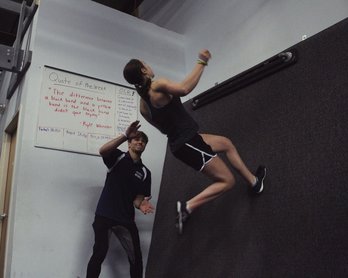See the Schedule page for current times.
What is Parkour Class?

Our parkour class was developed based on the philosophies of Chris and Brian Wilczewski, founders of the Movement Lab gyms. The goal of this curriculum is to introduce students to the world of parkour in a fun and disciplined manner! Parkour is centered around the idea of moving from point A to point B as quickly and efficiently as possible, using whatever techniques needed (climbing, rolling, swinging...). In our classes, our trained coaches teach all abilities the foundational movements, which we then progress to more difficult skills. Classes will include:
We offer youth classes for ages 5-12 yrs, and teen/adult classes for those 13 yrs and older. Pre-registration is recommended, especially for the youth classes. Class sizes are restricted to ensure a quality experience. Just be sure to fill out our waiver before attending class. You can watch the rules video at home too!
- Warm up
- Conditioning
- Skills
- Cool down and stretching
We offer youth classes for ages 5-12 yrs, and teen/adult classes for those 13 yrs and older. Pre-registration is recommended, especially for the youth classes. Class sizes are restricted to ensure a quality experience. Just be sure to fill out our waiver before attending class. You can watch the rules video at home too!